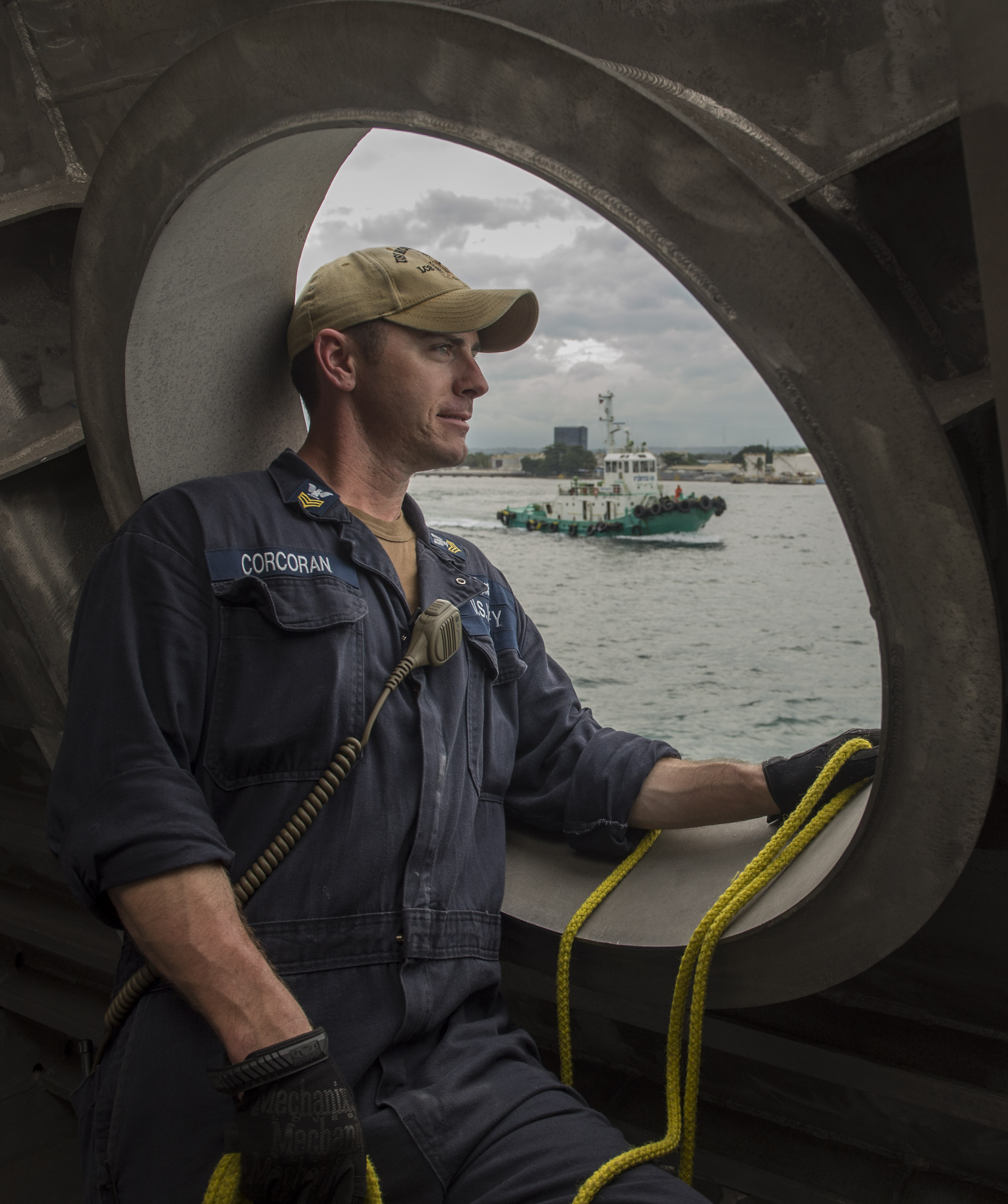
This is the first of a two-part series on the current state of the Littoral Combat Ship program.
SAN DIEGO, Calif. – Five years from now, there may be as many Littoral Combat Ships deployed as there are destroyers.
The ships are here now and only growing in footprint: that’s the message the head of the surface force is repeating, trying to capture the attention of anyone for whom the words “Littoral Combat Ship” brings to mind limited deployments and mission package development delays.
“LCS is mainstreamed. It equals the ability to deploy of our DDGs,” Vice Adm. Richard Brown told USNI News in a recent interview at Naval Surface Forces headquarters.
In just a few years, he explained, the Navy will have 66 LCS crews to support 38 LCS hulls in their deployments, training and testing activities. This compares to 68 destroyer crews today. While the LCS program won’t rival DDGs in terms of percentage of manpower – the LCS has a much smaller crew – the LCS’s much higher operational availability means it’s conceivable that as many LCSs may be on deployments as destroyers at any given time.
USS Montgomery (LCS-8) is deployed in the Western Pacific today. A second Independence-variant hull, USS Gabrielle Giffords (LCS-10), deployed earlier this week, from San Diego to WESTPAC like its sister ship earlier this week, a Navy official confirmed to USNI News on Friday. Defense News first reported the deployment. Freedom-variant USS Detroit (LCS-7) will deploy from Mayport, Fla., later this year to U.S. Southern Command, and USS Little Rock (LCS-9) is also working up for the next deployment from Florida.
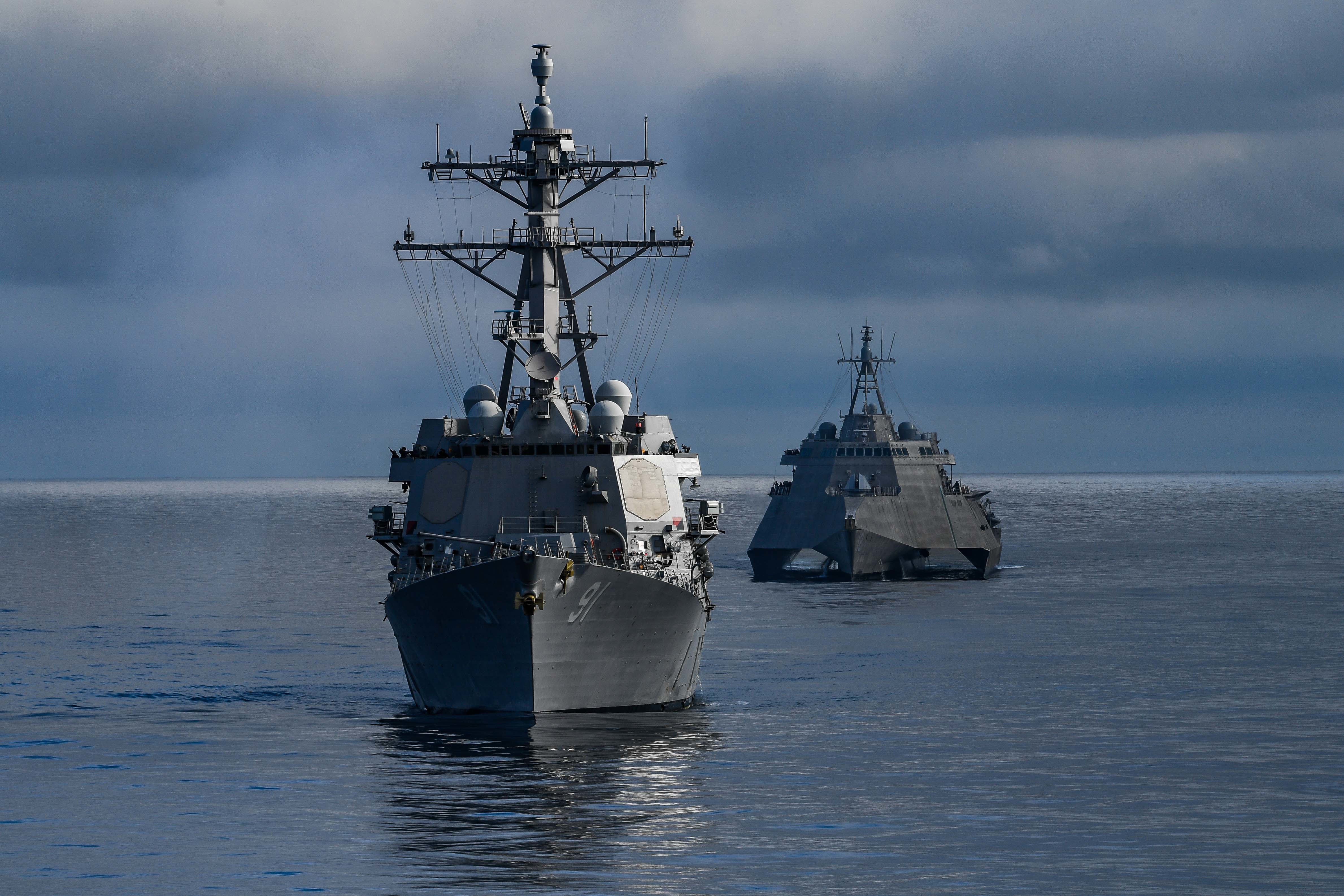
Beyond that, a handful LCSs have been operating off San Diego and in the greater U.S. 3rd Fleet area of operations, conducting not only testing and training activities but also actual surface warfare and maritime domain awareness operations, Program Executive Officer for Unmanned and Small Combatants Rear Adm. Casey Moton told USNI News in a separate recent interview at Washington Navy Yard.
“We were in a stage of just a few ships, pretty intense focus … on an individual ship deploying to an individual spot,” Moton said of the status of the program when he left in 2016 as the captain in charge of mission package development. He returned this summer as the rear admiral in charge of the LCS shipbuilding and mission package development, as well as unmanned boats and frigates.
“And so I come back, and things have progressed. We are 19 ships delivered; four this year, I think, two or three left to go. A big change there. … We are now firmly into executing the LCS plan, the fleet plan, in terms of both the ships getting out there in their (training and deployment) cycles, getting the crews certified. … It’s in a different mode. The ships are out there; we are now putting them to good use and doing what we always hoped.”
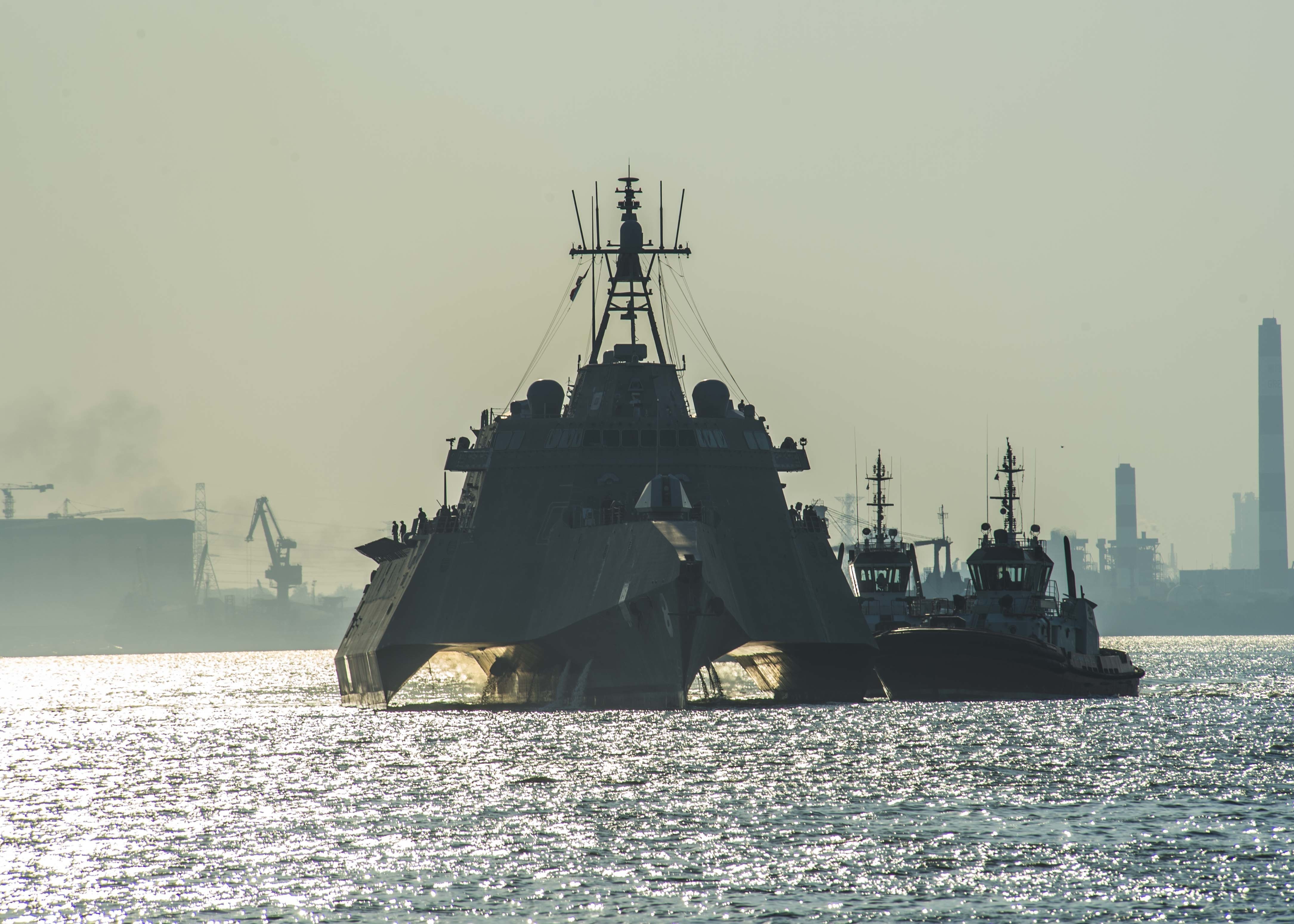
That three ships will be deployed overseas by the end of the calendar year is certainly a far cry from the program’s history. USS Freedom (LCS-1) deployed once in 2013. USS Fort Worth (LCS-3) deployed in late 2014 and suffered a propulsion system failure in early 2016, sidelining the ship for the final stretch of its planned 16-month deployment. USS Coronado (LCS-4) deployed in 2016, suffering an early engineering casualty that forced repairs in Hawaii but then operating for about 14 months out of Singapore. USS Independence (LCS-2) never conducted an overseas deployment and likely never will, under the current deployment model.
Though the ship class got off to a slow operational start, including zero deployments in 2018, Brown said it’s moving in the right direction to achieve the vision for LCS: ships forward-deployed to Bahrain in the Middle East and Singapore in WESTPAC, with potentially other smaller hubs set up on more of an expeditionary basis; blue and gold crews rotating to keep the hulls forward for two years at a time; and the surface warfare and mine countermeasures mission packages allowing LCS to replace the legacy Cyclone-class patrol ships and Avenger-class MCMs.
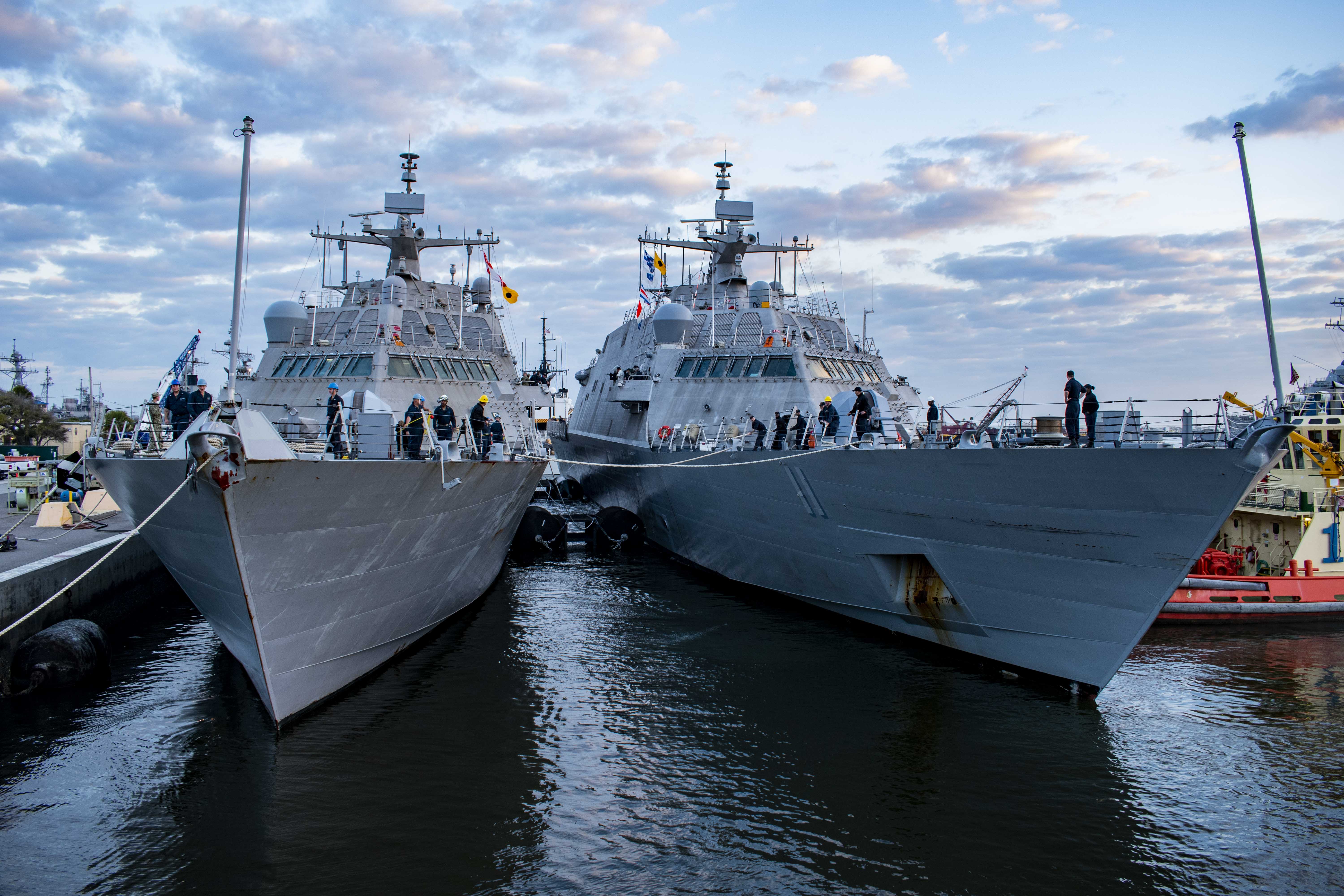
With the reboot of LCS operations – which began when Montgomery deployed without any public or congressional notification in late May, part of a U.S. Pacific Fleet tamp-down on discussing operations – Brown said there will likely always be multiple LCSs on deployment going forward, starting this fall.
To support the boom in LCS activity, Brown is closely monitoring the personnel side of the program and making small adjustments to keep manning on track, he told USNI News. Earlier this summer, he said, he brought LCS program leaders out to Navy Personnel Command headquarters in Tennessee to make sure everyone was on the same page about the LCS training pipeline and timeline being different than other surface combatants.
Under the Career Management System/Interactive Detailing process, Brown said, the Bureau of Naval Personnel can identify a replacement for a DDG sailor and get that new person trained up in time to report to a ship. That’s not the case for LCS, because the training pipeline sits at about 15 to 18 months, longer than the CMS/ID process.
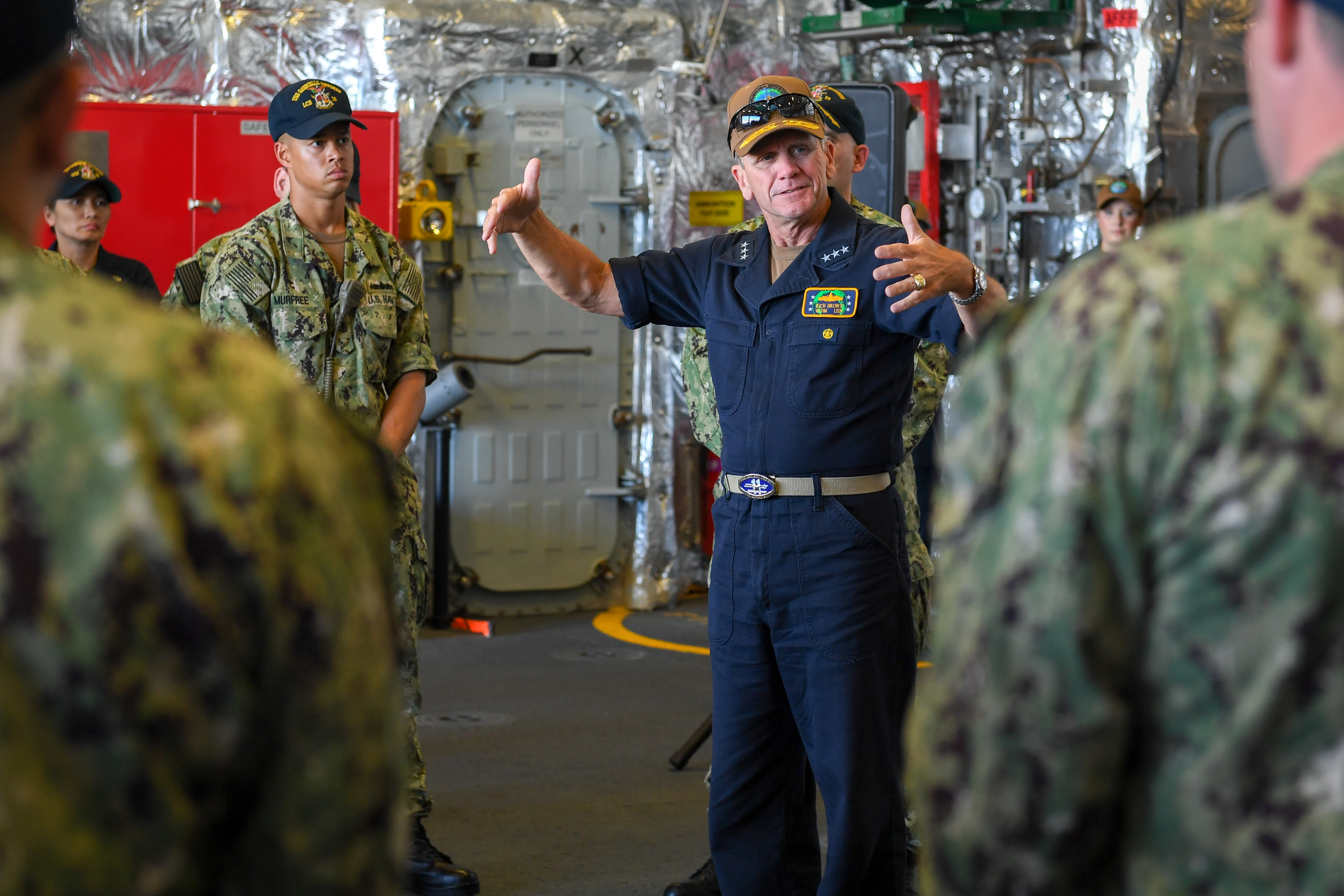
Brown said SURFOR and BUPERS are working closely together to understand the complexities of getting the right sailors assigned to the right ships at the right time. It’ll be more of a challenge than other ship classes, he conceded: after a 2016 overhaul of the LCS fleet, the ships are broken up into divisions in San Diego and Mayport based on hull variant, and then further broken up into divisions based on the warfighting area they’ll conduct – surface warfare, mine countermeasures or anti-submarine warfare. That means there is a maximum of three hulls and therefore six crews that will be identical. The composition of a crew is slightly different from a Freedom-variant ship doing surface warfare compared to a Freedom-variant doing MCM, for example, and the detailing and training will need to reflect that. The crew on a division’s training ship will be larger and more experienced than the crew of a deploying ship, and LCSs 1-4 will remain stateside to conduct mission package testing, creating even a different manning requirement.
The good news is that that complex setup of divisions and blue/gold crews means the LCS fleet should reach an operational availability (Ao) of .56 – meaning the ships will be available for fleet tasking more than half the time, and also more than double the rate of destroyers. The bad news is that it will be a bear for the manning community to ensure that all the right sailors with the right training show up to rotating crews at the right time.
“What’s particularly challenging in LCS, it’s 100-percent fit/fill. So you get 100 percent of the crew, and that’s how you’re going to deploy that crew,” Brown said.
But with only three ships per coast that have similar crews, “you can’t necessarily go and get a, if you have to do a manning action because something happened, to go get a sailor from an (mine warfare) ship and put it on (a surface warfare ship), because he won’t have the same training profile. So that’s what is a little bit more challenging than a destroyer or a cruiser; there’s a lot of commonality between the cruisers and the destroyers that makes it a little bit easier from a manning aspect. So we really have to keep an eye on the manning for the LCS.”
With LCS crews already being so small, “the fact of the matter is they won’t go forward without being 100/100” fit/fill, Brown said, so the manning has to be handled just right to support all the planned deployments.
SURFOR is now getting into manning ships in the mine countermeasures division and is learning more about what it takes to man the MCM hulls and train the sailors to work the still-in-development mission package.
Brown said he’s also carefully watching crew training, as they fine-tune what advanced training for LCSs will look like ahead of deployments. He said basic phase training is going well in accordance with the LCS training manual, with both the blue and gold crews for Montgomery and Giffords all certified.
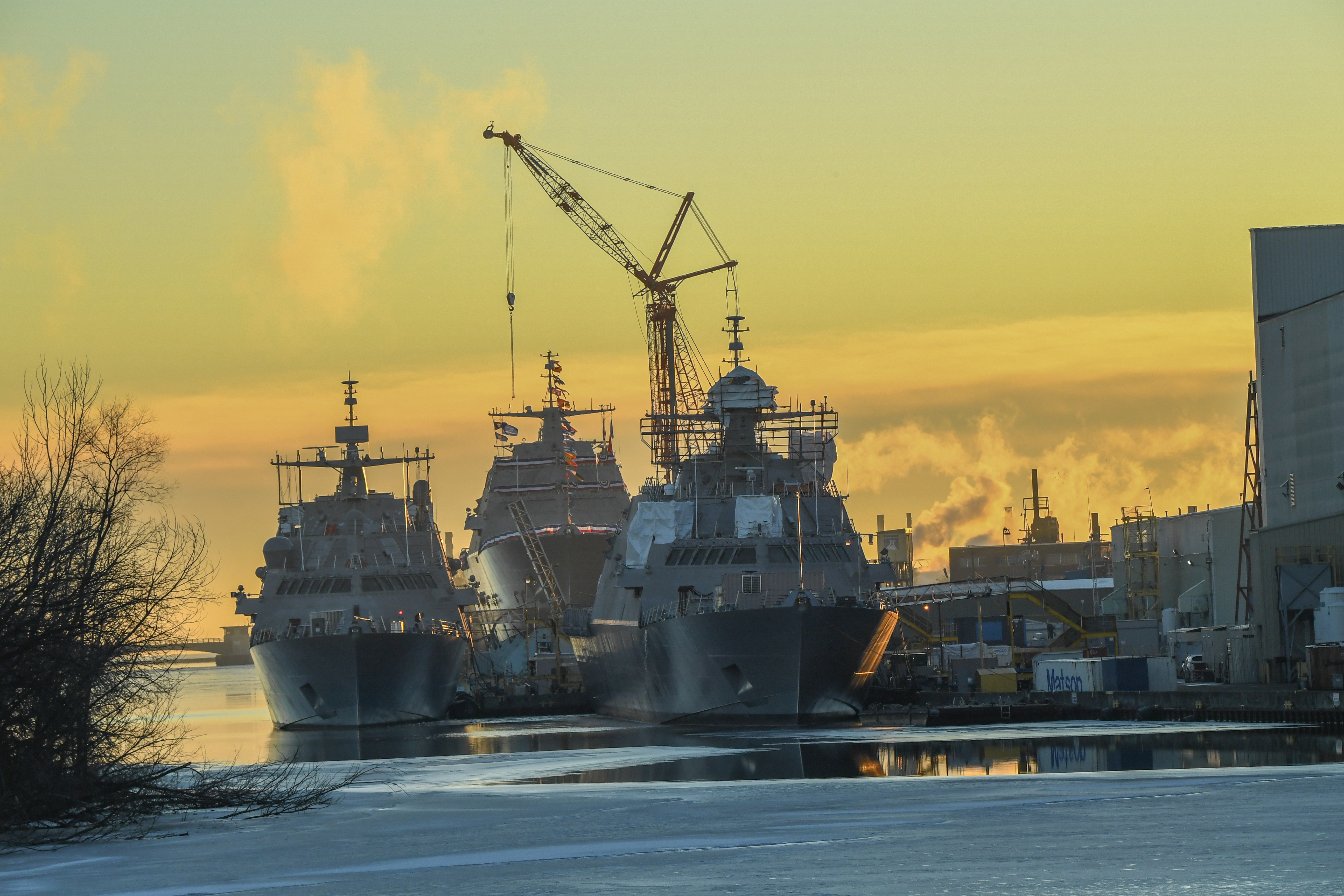
“We even took it one step further, we provided all four crews advanced training in a SWATT-like event,” he said, referring to the Surface Warfare Advanced Tactical Training events hosted by the Naval Surface and Mine Warfighting Development Center.
“Montgomery’s blue was a SWATT that was done with another LCS. Montgomery gold and Gabrielle Giffords gold was a full-on SWATT that was done with the [Theodore Roosevelt] strike group’s ships. So we have this gamut of advanced training, and we’re trying to make sure that we get the advanced training correct for LCS, recognizing that LCS is not a carrier strike group asset. LCS is designed to operate in support of carrier strike groups, and they’re single-mission ships. So we have to make sure we give them the right advanced and integrated training, given the unique circumstances and the capabilities of the ship and the crew.”
Brown noted that the Montgomery gold crew conducted its advanced training aboard USS Omaha (LCS-12), currently designated as the division’s training ship while former trainer USS Jackson (LCS-6) undergoes maintenance. This was the first time the training ship has actually served as a training platform for a crew while its assigned ship was already deployed forward, which Brown touted as another win for executing the new LCS model.
“That vision that was developed back in 2016, for the first time we actually implemented it last month. We said we were going to do it, and we went and did it,” he said, noting that Montgomery gold will replace the blue crew later this fall, while the ship hull remains operating forward in WESTPAC.
Another challenge to reaching the full vision of the fleet of LCSs operating forward is ensuring the ships reach sufficient reliability and maintainability.
Brown said he’s still learning a lot here, since the first four LCS hulls are considered to be prototypes, and builders Austal USA and Lockheed Martin didn’t begin serial production of the ships until hulls 5 and 6. With LCSs 5 and 6 just a year or so out of their post-shakedown availabilities, and a lot of maintenance and reliability lessons not learned until the ships are out of PSA, fully owned by the fleet and operated extensively, Brown said his staff and Moton’s staff at PEO USC are still learning a lot about what’s likely to break.
“Now we’re starting to get a really good sense of the material condition of the ships, and the material condition is really good. But you always have problems – this breaks over here, that breaks over there – and now as 5, 7, 9 are all operating, we’re starting to see, okay, we need to go back and stock more of these types of parts, we need to make sure we have training in place for these types of systems.”
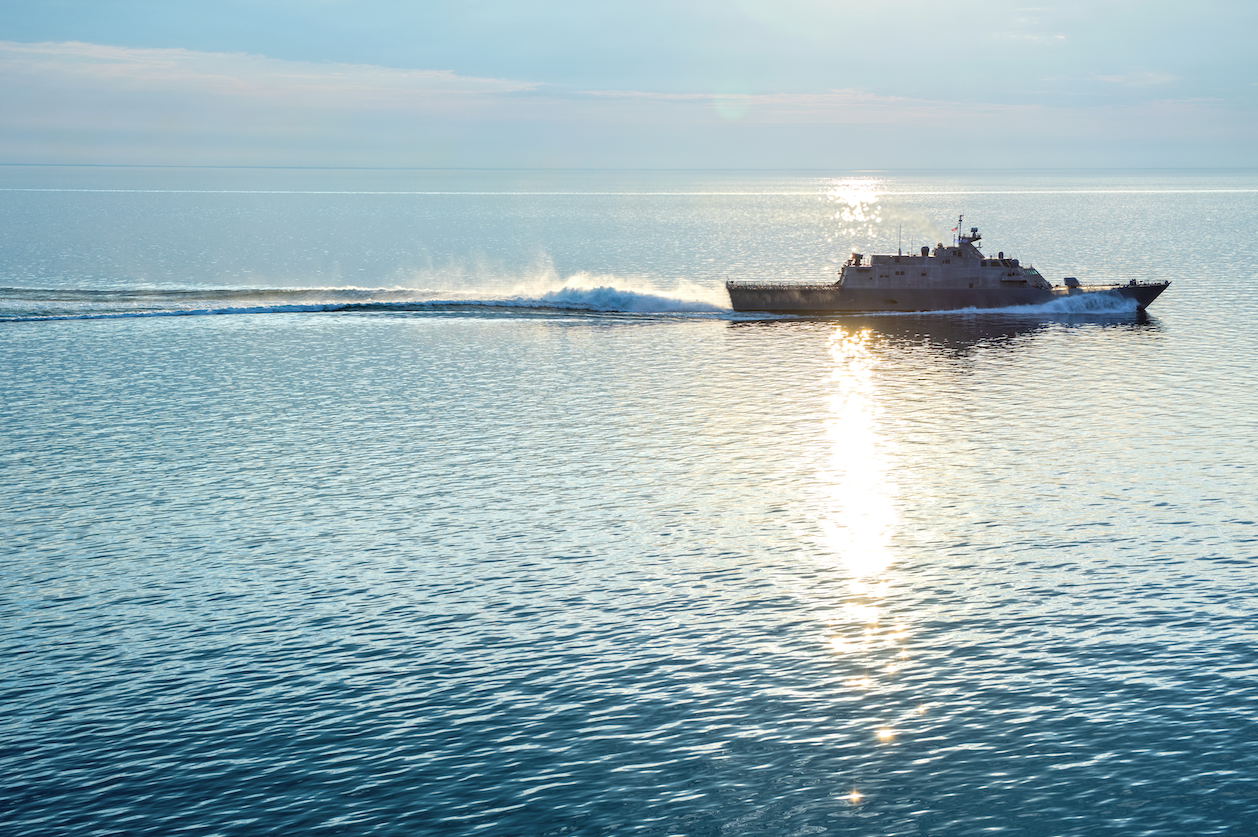
Moton told USNI News that there’s just now a critical mass of LCS at-sea activity to begin really seeing how his office can help improve reliability and maintainability of the ships.
Two of his program offices “have a forum called Top Technical Issues … basically it’s a robust process for monitoring failure data, material data, for getting crew feedback, looking at [casualty reports]. I have had a chance to see what the team has done, and they have done a lot of analysis. Some of the ones that have caused us more reliability issues on the ship, they are attacking design issues, those kinds of things. And we are getting that stuff implemented.”
Moton said the top challenges, as is the case with most new classes of ships, are related to the main propulsion and auxiliary systems. He said those tend to be the hardest systems to learn to operate and maintain, but “what I see in the metrics so far is a leveling off” of urgent response issues – meaning something broke – and instead more of a focus on routine ship maintenance and support.
“I want to improve the reliability and maintainability of LCS. And that statement isn’t me sort of making any indictments on the ship or anything, it’s just a matter of fact. It’s still a new class, we’re getting feedback,” Moton said.
“There had been some particular areas that have caused more failures than others. The design piece is already good, but I’m pushing the team right now, in the early stages, to go also look at just making sure as we step up that we’ve got the supply inventory correct; clearly we own part of that problem, but just helping out the rest of the Navy, [Naval Supply Systems Command], the fleet, on parts. Making sure that the crews and the [Regional Maintenance Centers] and the contractors on the LCS plan have the ability to do everything they need to do for their corrective maintenance and preventative maintenance. Just like we would get feedback on specific failures, we’re actually getting a lot of feedback like the crew saying, if I had just had this special tool, then I could have fixed it maybe quicker than we could have gotten a contractor there. And it’s a small crew, so we’re not trying to put that workload on them, but I don’t think there’s any harm in giving them that capability (to make repairs themselves). So there’s a lessons learned process both on the technical side but also on the support side. And I’m pushing that pretty hard.”
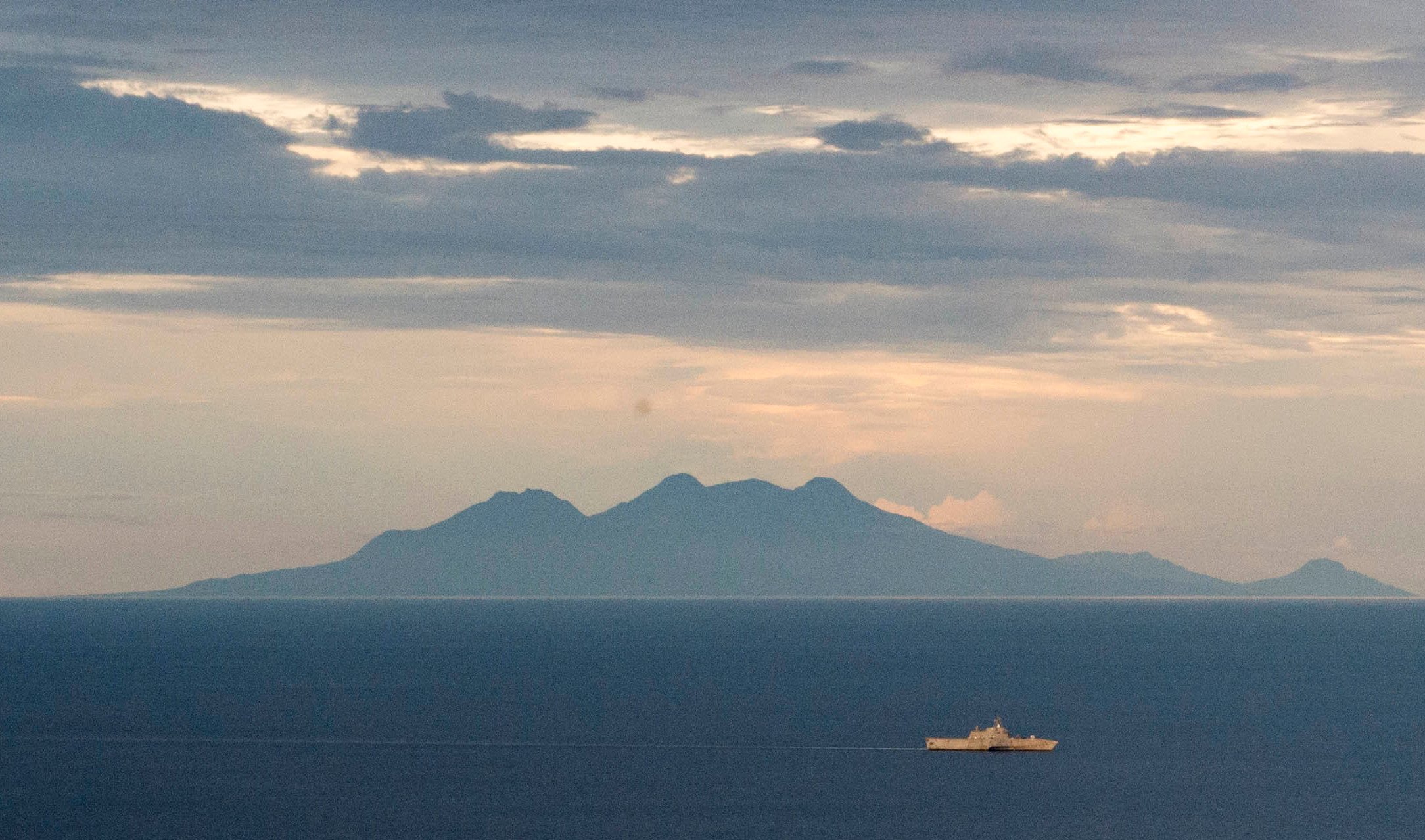
Though there’s still work to do, and several years to go, before the LCS program reaches its full capacity of deploying three divisions’ worth of ships from both coasts on a routine basis, Brown said he’s pleased to see the class on the right track.
“Really what we want to ramp up to is the hull is forward-deployed for 24 months (compared to the current 18), and then you get a number of deployments out of the crews. Then, once that happens, then the manning construct on the ships is able to mainstream through the CMS/ID system as we make the adjustments for the length of the training for the LCS crews. The maintenance engineering teams, the METs, are all built and funded. And so everything that we envisioned actually comes through,” Brown said.
“We still have a number of years, I think, to go before that is completely true – we’re going to start building the METs next year and then they’ll probably be built out by Fiscal Year ‘22, and then we’ll be able to start backing off the contractor maintenance and then have the METs do the maintenance. The hulls are delivering at pace, so within five years they’ll all be delivered and we’ll have 66 crews. That’s mainstreamed right there. And then we’ll start reaching the Ao of .56. We’ve got it.”





